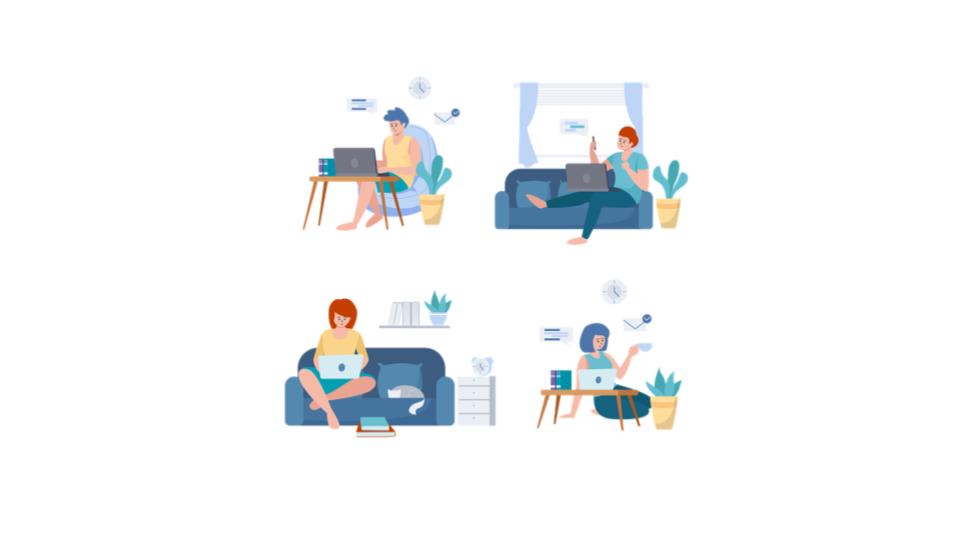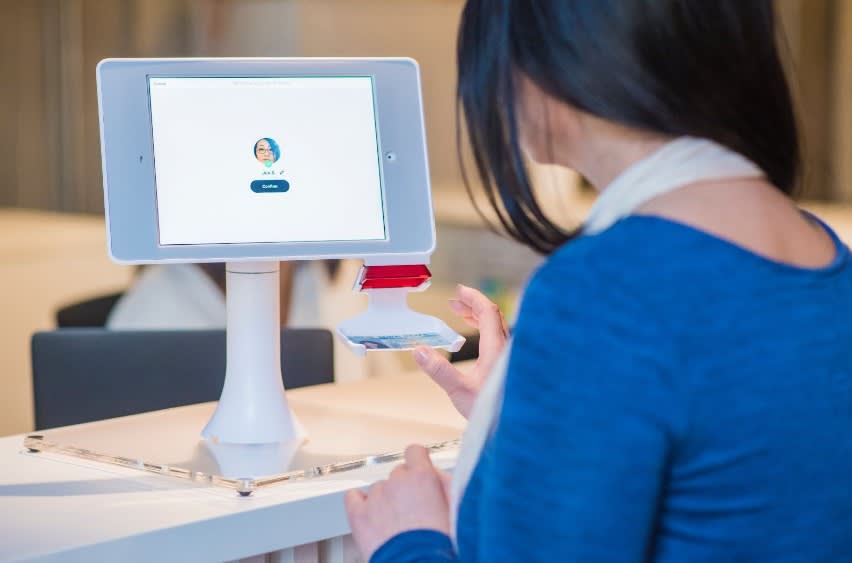6 Innovative Technologies That Support A Remote Working Model
Keep reading for a comprehensive guide to the best innovative technologies available to help you ensure your hybrid working model is successful.

76% of US companies are planning to or have already implemented a hybrid or remote work model in their business to support an improved work-life balance for employees and reduce the carbon footprint of daily commuting.
Suppose you’re considering implementing a remote work model in your business. In that case, you need to be aware of the best technologies to keep your workplace secure, ensure productivity, and protect your cloud-based platforms from interception.
Keep reading for a comprehensive guide to the best innovative technologies available to help you ensure your hybrid working model is successful.

6 Innovative Technologies For Your Hybrid Working Model
Let’s dive in and discuss these innovative and future-proof technologies that work well to keep your remote work model secure and maintain productivity levels.
Cloud-Based Security
When working remotely, you need to be able to access security information and operate your building’s security. Cloud-based security is rising in popularity as it allows security staff and system administrators to view real-time data gathered by their security feature installations remotely.
With a variety of commercial door lock types available, your team can choose a door lock that fits your business needs. Cloud-based door locks allow for remote door unlocks and management to ensure your employees can access the workplace should they forget their access device, key, or fob. This saves time for your employees and prevents wasted time leading to lower productivity levels.
Cloud-based access control facilitates mobile credentials in place of fobs or keys for convenient access. The system ensures traffic runs smoothly throughout your building by allowing users to open doors with a hand wave. The access control reader can communicate with mobile devices via Bluetooth, cellular, and WiFi communication, ensuring first-time access. Users do not have to remove their phones from their bags or pockets, meaning they won’t hold anyone up at the entrance to your building searching for their mobile device.
The touchless operation of this system reduces the number of touchpoints your employees come into contact with upon entering and exiting the building, decreasing the potential spread of germs in your workplace. With convenience, remote operation, and reduced health risk, cloud-based access control is a staple in any remote work security system.
Integrating Access Control With Time Tracking Software
Buddy punching is a significant issue in the workplace, with employees logging their hours incorrectly. To ensure your employees work total hours, you need a remote work time management plan and in-office tools to track hours. Integration of your access control system with time tracking software will give you a more accurate method for logging employee hours.
It can be challenging to maintain an awareness of employee activity with a hybrid work model, and this technology provides accurate data on your employee’s hours. This integration works particularly well if you’re working with independent contractors and freelancers, as it will give you a better idea of their billable hours and potentially save you money.
Occupancy Management
When you switch to remote working, fewer employees will utilize your office space each day. This means that there could be an opportunity to downsize your office space and significantly reduce your monthly overheads.
To gain an understanding of how many employees use your office at one time, you can integrate occupancy management software with your access control system. Occupancy management software provides data indicating how many users are occupying your office spaces at one time. By using this software for a few months, you will understand the peak and minimum occupancy levels in your office. If peak occupancy levels are relatively low, this would indicate that you can benefit from downsizing your office space.
Smart Desk Management
When your employees decide to use office resources, they will need desk space. Your employees will be stressed and disgruntled if they travel to the office only to find that all desks are in use.
Smart desk management is a tool your employees can reserve desks for when they plan to use the office. The software ensures your employees don’t waste time traveling to the office or waiting for a desk.
Users can reserve a desk on a user-friendly interface that displays your office floor plan and the available desks and dedicated desks. Employees can also view who booked each desk to sit with their team or even their coworker friends.
Smart desk management is an essential technology to ensure office resources are available to all employees.
Visitor Management
Visitor management software automates the visitor registration process. Suppose you integrate visitor management software with your access control system. Visitors can fill out a digital registration form to enter the building. Once they have left the building, the system will automatically log them out and revoke access.

Automated Wellness Verification
You can use wellness verification software to ensure symptomatic individuals can’t access your communal office space. Like with visitor management software, wellness verification requires users to fill out digital forms based on their symptoms before being granted access to the building. If they are symptomatic, the system will restrict their entry, and they will be required to either isolate or take a COVID-19 test. Hygiene-based technology is essential for ensuring your employees are comfortable returning to the office.
Summary
Transitioning to a remote work model can be challenging, especially without cloud-based technologies that allow for remote management of your office space. With these technologies, you can view your office security system data that keeps you aware of your employees' activities. Implementing these technologies can make the transition to remote working simpler and more convenient.

